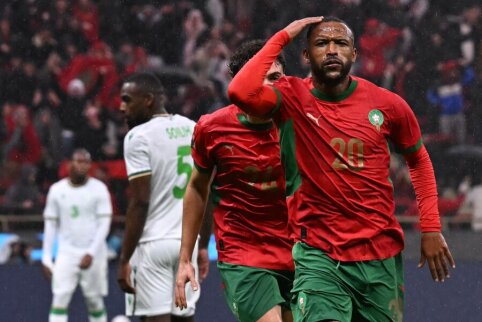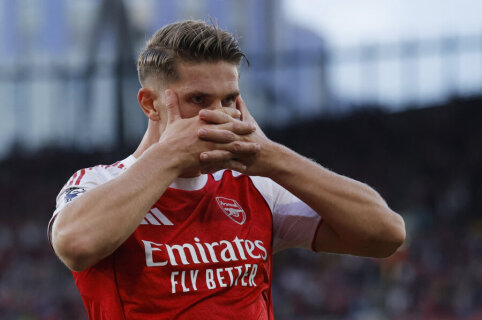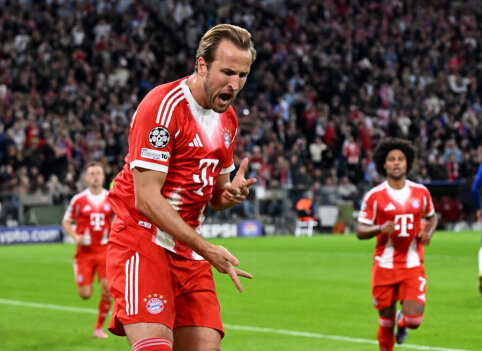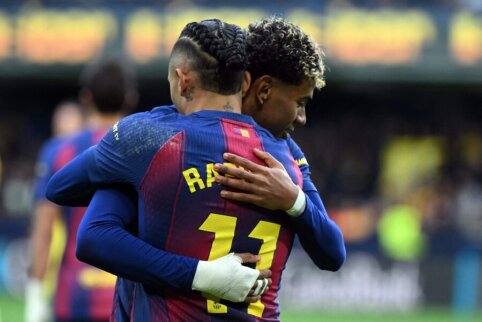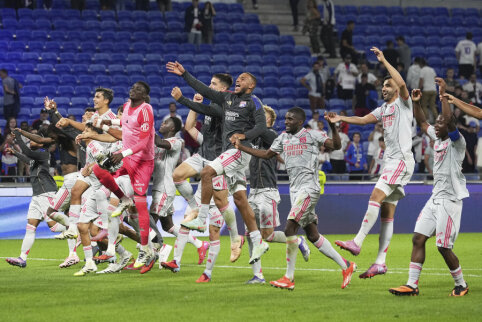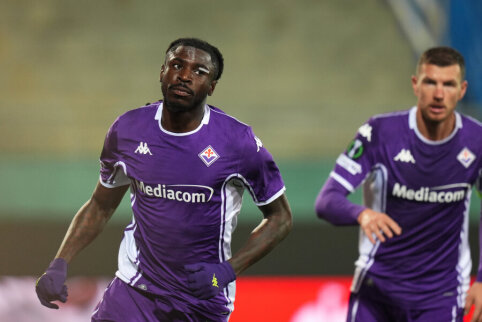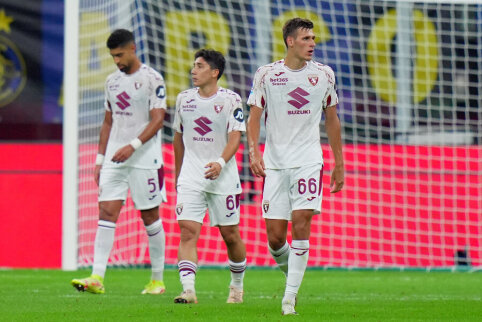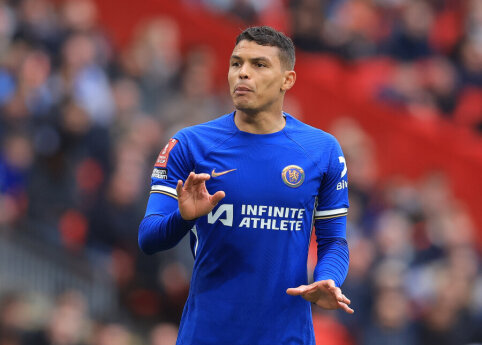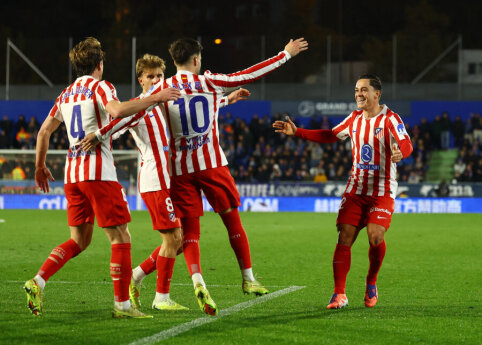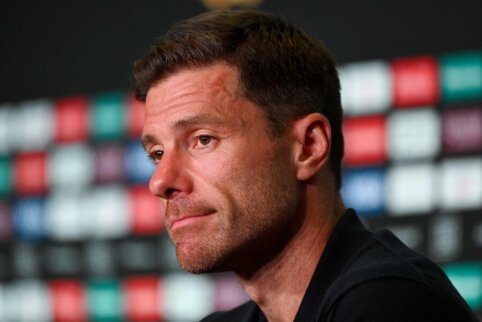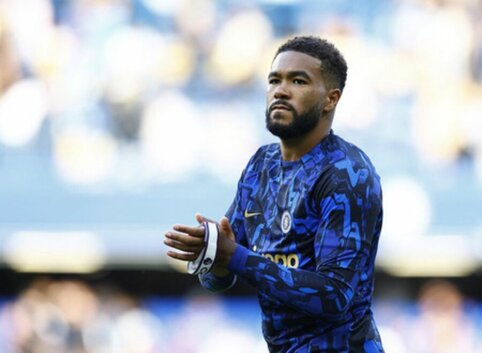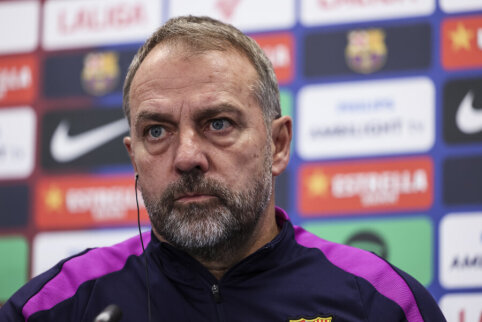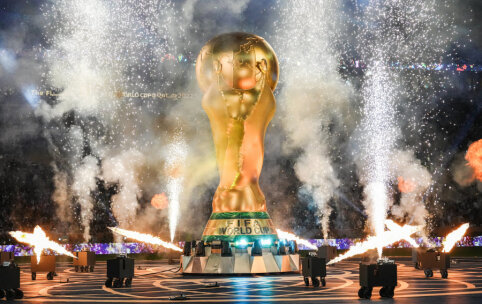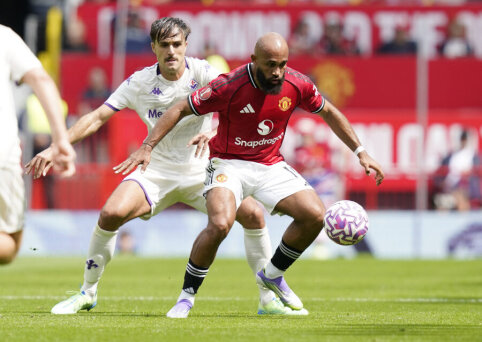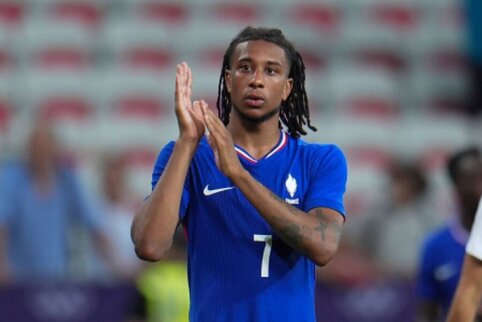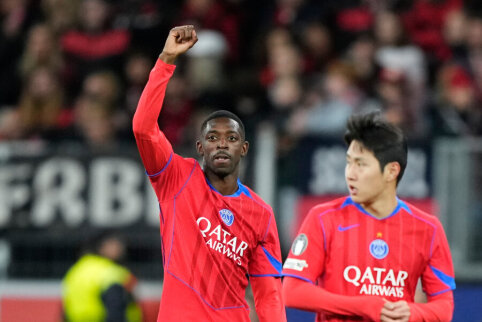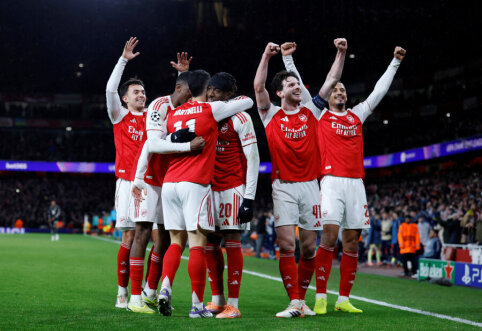 © EuroFootball.com
© EuroFootball.com
In the section "Tribūna" - a little bit of history. EuroFootball.com visitor Norbertas suggests an article about the activities of the Jaunalietuviai Sports Organization in the field of Lithuanian football in the mid-20th century.
"Although this may be a somewhat trivial topic, I think it can be quite interesting. The article is based on sources from the interwar press. If necessary, I could prepare more publications on similar topics," the author said in his letter.
Many visitors to the EuroFootball.com website are more or less familiar with football beyond Lithuania's borders. Quite a few visitors to the site could list entire national, as well as club, teams from England, Spain, or Italy, and express a multitude of facts related to their favorite teams. Some could even tell detailed histories of their favorite foreign teams.
But what could the visitors of the website say, tell about the birth and development of football in independent Lithuania of 1918-1940? What was the popularity of football in interwar Lithuania? What clubs existed then? It's hard to say what the answers would be, but I think we would hear more about the history of Madrid's "Real" and "Manchester United" clubs than about all of Lithuanian football from 1918-1940.
This article is dedicated to the Jaunalietuviai Sports Organization (hereinafter - JSO) and its contribution to the development of interwar football in Lithuania. Although this organization did not dictate the main trends in Lithuanian football life at that time, it still made a certain contribution to it. Therefore, in this work, I would like to review a few details from the history of this organization and, at the same time, reveal the state of football in Lithuania in the mid-20th century.
The Jaunalietuviai Sports Organization was established in 1931 as a separate branch of the national organization "Jaunoji Lietuva." It was declared that the main task of the JSO was to reveal the inner beauty of a person (youth) through sports, to teach young athletes to pursue noble ideals, and, of course, to improve the physical condition of Lithuanian youth.
By the end of 1931, JSO sports sections - branches began to form next to the existing "Jaunoji Lietuva" sections. In 1932, this process accelerated significantly, and JSO was admitted to the Lithuanian Sports League (young Lithuanians cultivating various sports could participate in the respective sports branches of Lithuania). By 1935, about 420 JSO sports clubs were already operating, uniting over 16,000 young people. By the tragedy in 1940, these numbers had almost doubled.
Football was one of the main sports practiced by Jaunalietuviai. After the union of "Jaunoji Lietuva" and the establishment of JSO, this game played a major role in the sporting life of young Lithuanians. The first football teams started to form right after the establishment of "Jaunoji Lietuva," while other sports were still preparing to emerge.
A significant step in Jaunalietuviai football was taken in March 1932 when JSO was admitted not only to the Lithuanian Sports League but also to the Football League. Thus, JSO's main football team (composed of the best young Lithuanian footballers), later named the Central JSO Football team (CJSO, operated in Kaunas), began its performances on football fields. Since other Lithuanian clubs' football teams had been playing this game for quite some time and were of a relatively high level (by Lithuanian standards), JSO debuted only in the B class (the second highest level) championship. In these competitions, young Lithuanians made a successful debut.
On April 22-23, 1933, a football - lightning tournament was held in Kaunas as part of the opening ceremony of the Lithuanian football season, in which the JSO team reached the semi-finals. Strangely enough, this was enough for the best young Lithuanian football team to be invited to the A class Lithuanian football championship. Thus, the JSO team, in its second season of existence, rose to the highest level of football and gained the right to compete with the strongest Lithuanian teams.
After the first round of the championship, the JSO team ranked 4th among the 8 clubs. Other young Lithuanian national teams also participated in Lithuanian B and C level championships. Meanwhile, the Kaunas JSO football club youth (reserves) achieved the greatest results in the 1933 season, taking first place in the C league championship.
In early 1934, JSO began to prepare intensively for the upcoming football championships. In March, the main football club of young Lithuanians even invited the coach of the Lithuanian national football team to help prepare for the upcoming season. With the arrival of the new coach, footballer training intensified - sessions started to be held twice a week.
In the provinces too, football played a major role among young Lithuanian athletes. There was almost no JSO club that did not have its football team, and in some places, like in Biržai JSO, there were even two football teams. Competitions were actively held between individual JSO football teams and teams of other organizations. Matches between young Lithuanians and the Riflemen (Lithuanian Riflemen's Union teams) always intrigued spectators.
The year 1935 was the biggest year for the rise of football in the young Lithuanian organization. By mid-year, there were about 150 JSO football teams operating throughout Lithuania. No other sports branch advocated by JSO could match the football teams in number.
Nevertheless, these were the last years when JSO football clubs surpassed the clubs of other young Lithuanian sports branches in terms of numbers. It should also be noted that the same footballers did not limit themselves to just one sport, and, for example, during the winter, they would engage in the activities of other sports clubs or even suspend their activities completely until spring, hence we can observe significant changes in the number of JSO football clubs. For this reason, by the end of 1935, it was announced that out of 150 JSO football clubs, only 101 remained.
From 1936 onwards, football gradually started to be overshadowed by other sports. This was probably also influenced by the fact that the results in the Lithuanian football championships were quite unsuccessful - there were no major victories. Also, the Lithuanian national football team failed to achieve high results internationally, as football in Europe had already taken deep roots.
These failures greatly influenced the decline in the popularity of this sport, not only among young Lithuanians but throughout the Republic. The only major success of the larger JSO footballers that we can mention is the triumph of the Kybartai JSO club in 1937 when the residents of Kybartai became the winners of their region's football championship and advanced to the highest Lithuanian football championship, where for several years the Centrinė JSO club football team was represented. Another significant achievement of young Lithuanian athletes in football occurred in 1933 when V. Jaškevičius, a member of CJSO, became a candidate for the Lithuanian national football team.
Although there were quite a few JSO football teams in 1937, they no longer played a leading role among the clubs. Over time, it was realized that quantity would never bring quality in terms of the number of football teams. In almost every city or town, there were 2, and sometimes even 3, JSO football teams that, due to division, were not strong enough to compete with other organization's club teams.
Discussing the performances of young Lithuanians in pre-war Lithuanian stadiums, it's worth mentioning a few interesting or intriguing facts. Nowadays, we have often heard about various incidents that accompany teams' appearances in stadiums. There were also plenty of them in pre-war Lithuania.
Flipping through the pages of period newspapers, it was not uncommon to find reports of interrupted football matches due to outbreaks of scuffles or even fights. Referees were not spared from footballers' punches either. If we were to talk about the adventures of JSO footballers, it would be worth mentioning an incident in Ukmergė. During a match between young Lithuanians and representatives of the Polish national minorities, supporters of the Poles, unable to withstand the tension in the stadium, pulled out guns and started shooting. Luckily, one of the Ukmergė city law enforcement officials was present in the stadium and quickly calmed down the enraged Poles.
Interestingly, JSO footballers also played a significant role in the rise of Lithuanian basketball. At the beginning of the Jaunalietuviai Sports Organization's establishment, basketball was completely unpopular, and the first clubs were formed only in 1933. Later their number began to rapidly increase because during winter, the basketball team was mostly supplemented by footballers who, at that ungrateful time of year for football, usually wanted to maintain their physical fitness.
Later, some footballers turned to and remained to play basketball because it was believed that it did not require as much physical effort as football. It was also easier to form new teams since it only required 5 people. Unlike football, basketball had not yet deeply ingrained itself into the Lithuanian soil, so the JSO athletes began to reap victories in the Lithuanian basketball championships. Later, the Central JSO basketball team became the basis for the Lithuanian national basketball team. Since basketball was still relatively exotic in Europe, the Lithuanians began to achieve victories here and glorify the name of Lithuania.


